Minsk is a capital with beautiful Soviet city planning counting a grand general city plan with imposing quality buildings. Add old churches, green parks, interesting museums and a lovely atmosphere, and then you got some of the experiences that await visitors to the Belarusian city.
Minsk’s location on the large wooded plains has, throughout the city’s history, caused one devastating attack by neighboring countries after another. The city has always recovered, and nowhere else in the world is it possible for visitors to see a 1000 year old city that was almost completely destroyed within the last 100 years and rebuilt with great enthusiasm and efficient Soviet urban planning.
Independence Square and Boulevard are some of the most impressive city spaces in Minsk’s grand design. As a distinguished symphony, the buildings along the long boulevard form a striking setting that develops from neighborhood to neighborhood, and with the illumination in the evening, the sights almost becomes even better.
Not far from the fine architectural works of the Soviet and Belarusian era you can see many preserved and rebuilt houses and churches from Minsk’s past history. They contrast the newer parts of the city and it makes an interesting cocktail from an architectural perspective.
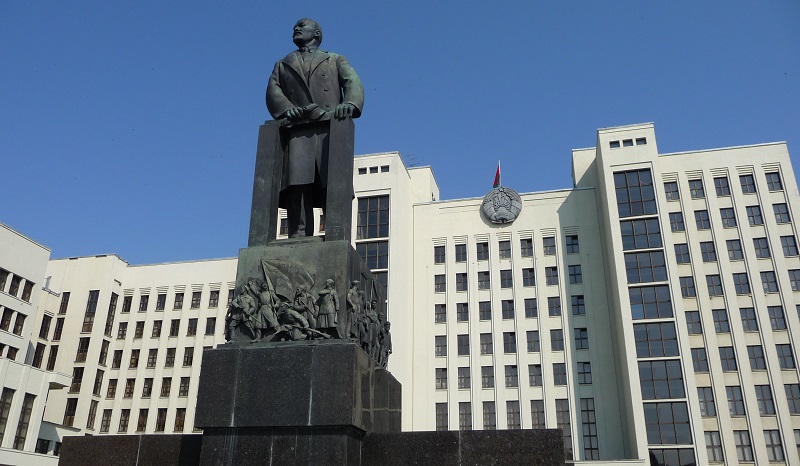
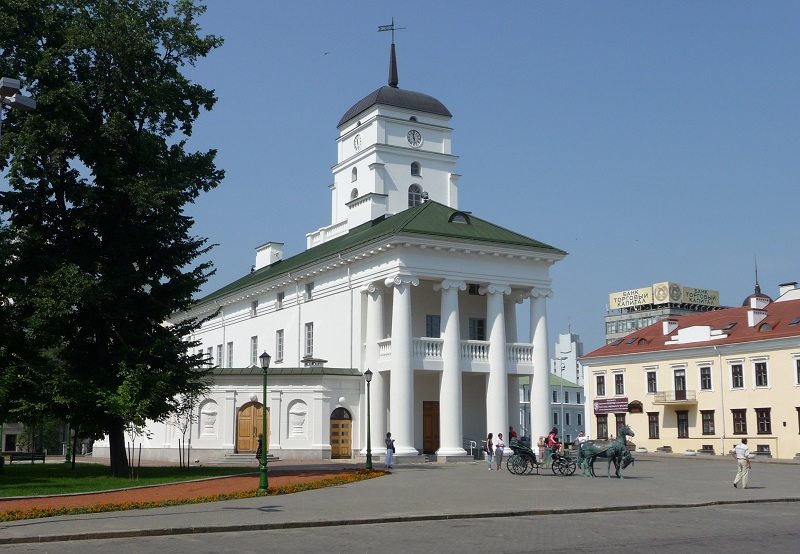
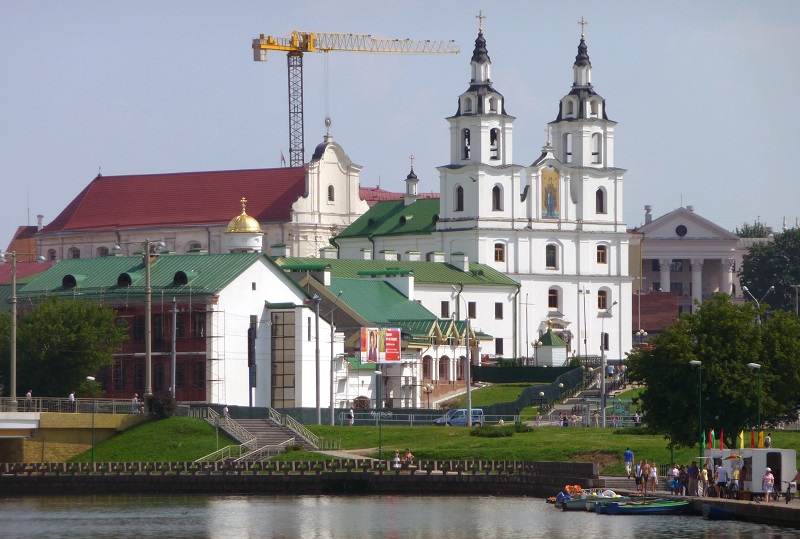
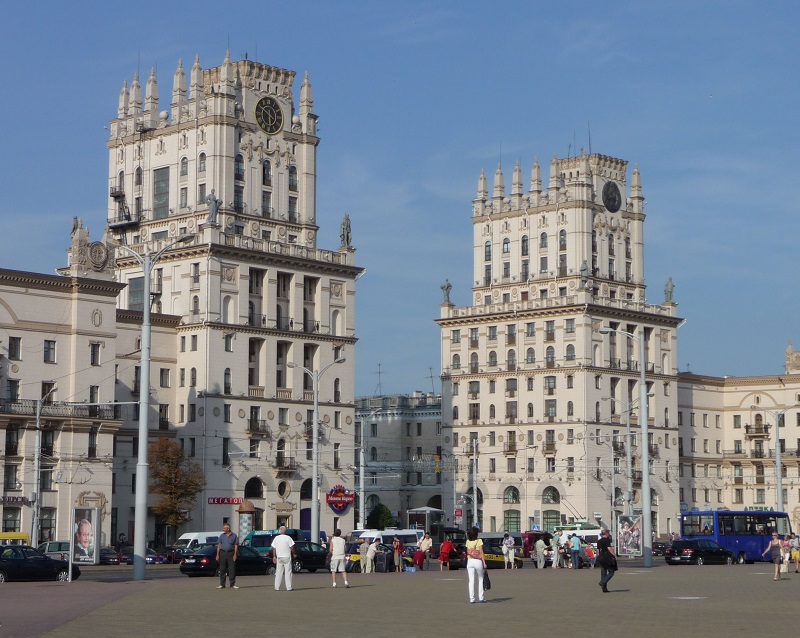
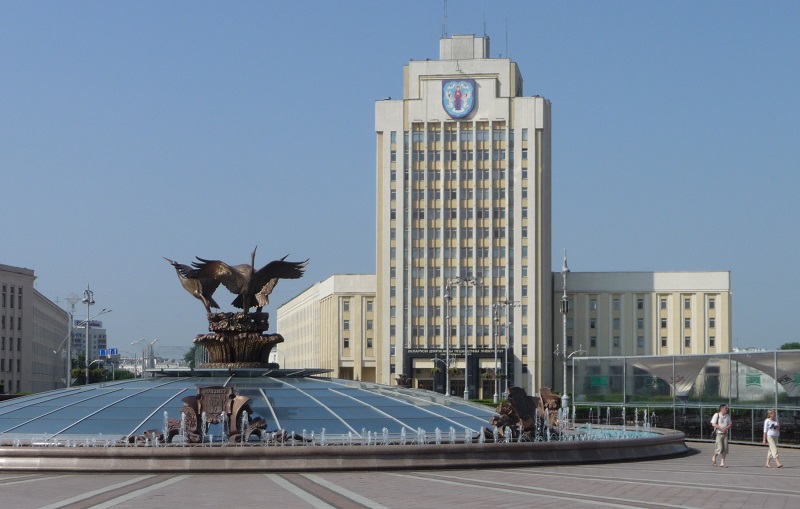
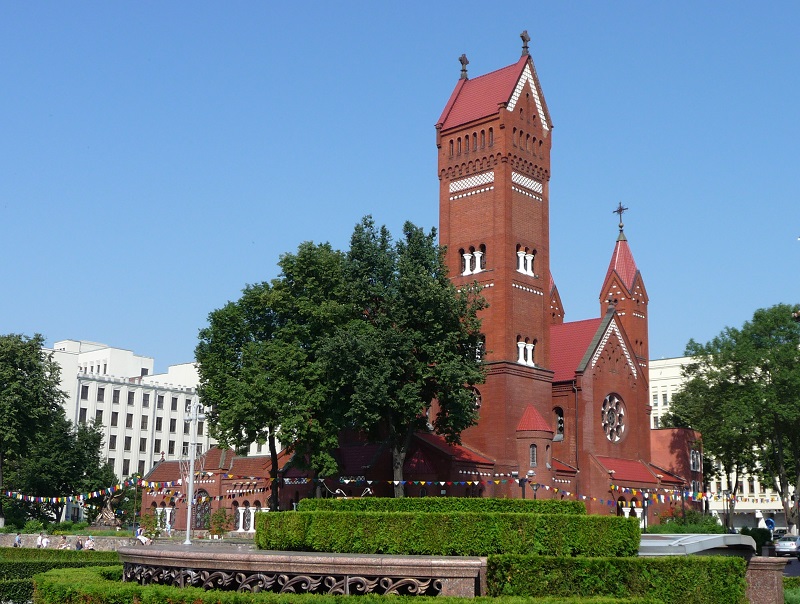
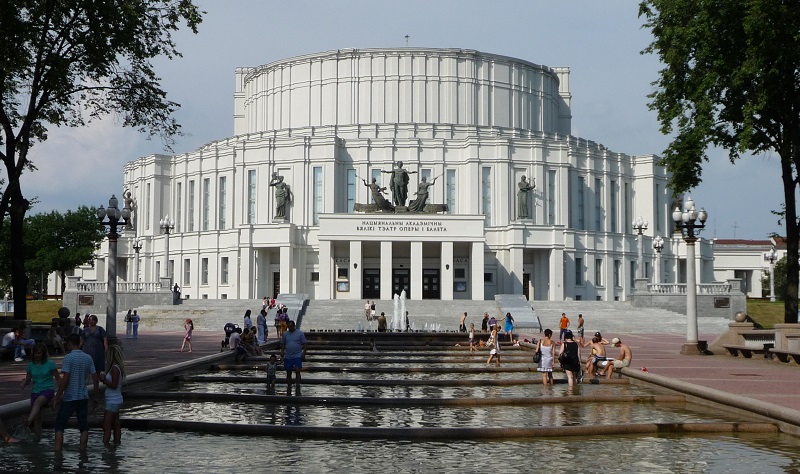
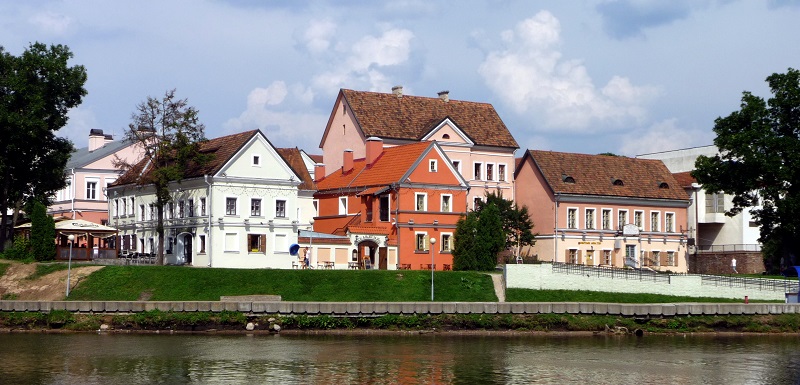
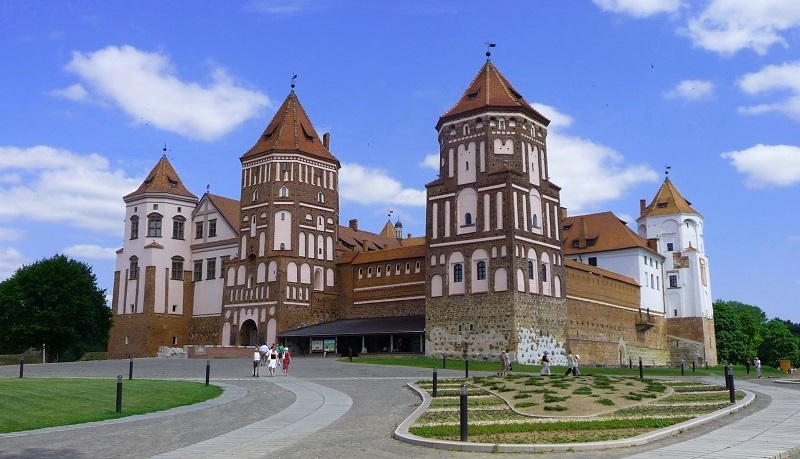
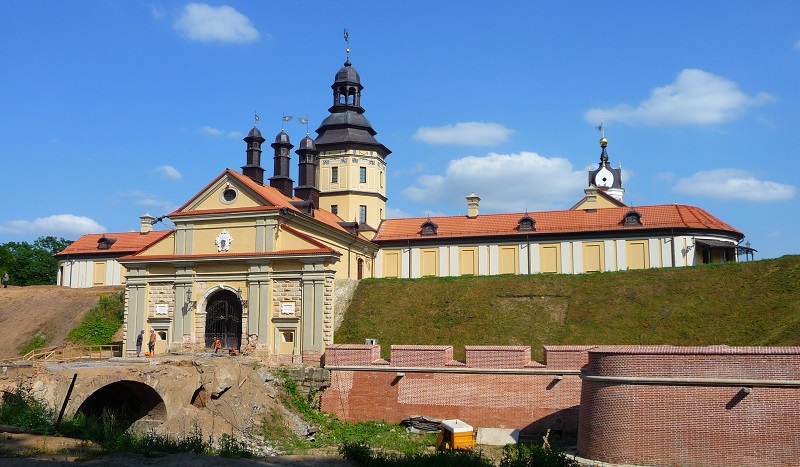
The foundation
Minsk is founded in the important river region between the Baltic Sea and the Black Sea on the basis of a favorable trading position. Slavic tribes from the south founded many of the early Belarusian cities, including Minsk, around the 8th century.
In Kiev-Russia, battles between the nobility of Kiev and Belarus’s leading city of Polacak came, and before Minsk is mentioned for the first time in 1067, the city was attacked several times and captured in turn by local princes.
In 1084, Minsk was burned and destroyed by Kiev’s Vladimir Monomakh.
Fighting for the Belarusian Territory
In the years that followed, the current Belarusian territory was divided into smaller principalities, Minsk became its own territory in 1104 and an alliance between Minsk and the Duchy of Lithuania emerged, though still with Kiev as a power factor. Kiev’s power in the area was broken when Khan Batu invaded Kiev in 1240. In 1241, Minsk fell victim to the Tatars’ looting.
In 1499, Minsk acquired Magdeburg’s market town rights, which meant a growth in commerce as well as the cultural development of the citizens. Six years later, in 1505, the city was attacked by Khan Makhmet-Girey of the Crimean Khan.
Development and invasions
In the 1600s, Minsk and much of present-day Belarus entered Poland, which lasted until 1793, when Poland was divided. Minsk subsequently became part of the Russian Empire.
Throughout the 1600s-1700s, Minsk had suffered from its location on the flat land between the great powers Poland and Russia. Both during the war in 1654-1667 between the two countries and during the Great Nordic War in 1700-1721 Minsk was destroyed when first Sweden and then Russia conquered the city. The rebuild every time consumed the city’s resources.
The Russian czar Aleksejs troops had conquered Minsk in 1654, and when it was recovered by Poland under King Jan Kasimir in 1667, there were only about 2,000 inhabitants living in about 300 houses. The number grew steadily through the 1600s-1700s to number 7,000 people in the late 1700s.
Nineteenth-century Minsk
In 1793, Minsk and the region were annexed by Russia, and three years later the city became the administrative center of the Minsk government. The Polish past was replaced by a Russian present, for example, all street names were changed for that reason.
Minsk’s population grew to 11,000 in 1811; the year before Napoleon’s attack on Russia. Minsk and Belarus had always been a battleground for the rulers of the neighboring areas, and in the Napoleonic War it was once again besieged, shelled and looted. Napoleon’s French troops passed Minsk on their way between Paris and Napoleon’s final goal, which was Moscow.
During the French years in Minsk, there was a struggle between Polish and Belarusian forces for control of the city. Poles were hoping for a renaissance for the Kingdom of Poland, while the Belarusians had national ambitions for their country.
By the time Russia regained its territory, Minsk had once again been destroyed, and by Napoleon’s fall the population had been reduced to 3,500.
Soon after the peace, Minsk flourished again. The city had established its status as the main city, and the development came quickly. In the 1830s, the central streets and squares were paved, and through the same decade, for example, a public library, a fire station and Minsk’s first newspaper saw the light of day.
In the 1840s theaters, more schools and colleges were added, and the city established itself as a major provincial city, and the infrastructure contributed to increased growth. In 1846 the main road between Moscow and Warsaw was passed through the city, and in 1871 the railroad came along the same route. Two years later, the Baltic Sea and Ukraine were also connected to Minsk by rail.
Industrialization came with the railway, which had made Minsk a traffic hub. In the year 1900 there were 58 factories in the city, which employed a total of 3,000 people. At the same time, about 100,000 lived in the city.
Minsk in the Soviet Union
Minsk was the seat of the political movement that would later become the powerful Soviet Communist Party. The Russian Social Democrats held their founding meeting in Minsk in 1898. After the Russian Revolution of 1917, the party became the country’s political power base under its new communist name.
In 1919, Minsk became the capital of the Belarusian Soviet Republic; a status it had until the dissolution of the Union. The following came new developments; in 1929, the city’s first electric tram ran, and four years later, the city’s airport became operational.
World War I was again some years that destroyed Minsk, and this time to a degree not previously seen in the city’s hard-tried city throughout history.
When Soviet troops reached Minsk in the summer of 1944, the Belarussian capital was reduced to a smoking heap of ash and rubble. More than 80% of the city’s buildings were completely destroyed, and of the city’s 270,000 inhabitants, only 45,000 remained after the end of the war.
Reconstruction and new development
The enormous destruction suffered by the city led to considerations as to whether the capital of the Belarusian Soviet Republic should be moved to another location or rebuilt from the ashes.
The reconstruction was chosen and an incredible amount of work was initiated, which led to the result that one sees as visitors in today’s modern Minsk.
The city was built following a grand Soviet urban planning with open, wide boulevards, monumental buildings and many green parks and streets scattered throughout the capital.
In the middle of the city is the 11 km long Francyska Skaryny boulevard, which cuts through the city’s central squares. Skaryny is the magnificent street of the city plan and a prime example of so-called Stalinist Soviet architecture. The richly decorated buildings along Skaryny are obviously inspired by the grand style of ancient Rome.
Minsk today
Minsk became the capital of the new state, the Republic of Belarus in 1990, and the following year, the CIS community formed, among other things. Russia, Ukraine and Belarus. Minsk became the administrative center of the community.
Since then, there has been tremendous investment in the city, Belarus’s economic and cultural center. The historic buildings rise again, this time between modern new buildings. In the green city, for example, the 19th-century Troitskoye district was rebuilt in the old style, so historic Minsk stands side by side with modern construction from the latter half of the 20th century to the present day.
Overview of Minsk
Minsk is a capital with beautiful Soviet city planning counting a grand general city plan with imposing quality buildings. Add old churches, green parks, interesting museums and a lovely atmosphere, and then you got some of the experiences that await visitors to the Belarusian city.
Minsk’s location on the large wooded plains has, throughout the city’s history, caused one devastating attack by neighboring countries after another. The city has always recovered, and nowhere else in the world is it possible for visitors to see a 1000 year old city that was almost completely destroyed within the last 100 years and rebuilt with great enthusiasm and efficient Soviet urban planning.
About the upcoming Minsk travel guide
About the travel guide
The Minsk travel guide gives you an overview of the sights and activities of the Belarusian city. Read about top sights and other sights, and get a tour guide with tour suggestions and detailed descriptions of all the city’s most important churches, monuments, mansions, museums, etc.
Minsk is waiting for you, and at vamados.com you can also find cheap flights and great deals on hotels for your trip. You just select your travel dates and then you get flight and accommodation suggestions in and around the city.
Read more about Minsk and Belarus
Buy the travel guide
Click the “Add to Cart” button to purchase the travel guide. After that you will come to the payment, where you enter the purchase and payment information. Upon payment of the travel guide, you will immediately receive a receipt with a link to download your purchase. You can download the travel guide immediately or use the download link in the email later.
Use the travel guide
When you buy the travel guide to Minsk you get the book online so you can have it on your phone, tablet or computer – and of course you can choose to print it. Use the maps and tour suggestions and you will have a good and content-rich journey.
Grand Boulevards • Beautiful Squares • Churches • Museums • Parks
Overview of Minsk
Minsk is a capital with beautiful Soviet city planning counting a grand general city plan with imposing quality buildings. Add old churches, green parks, interesting museums and a lovely atmosphere, and then you got some of the experiences that await visitors to the Belarusian city.
Minsk’s location on the large wooded plains has, throughout the city’s history, caused one devastating attack by neighboring countries after another. The city has always recovered, and nowhere else in the world is it possible for visitors to see a 1000 year old city that was almost completely destroyed within the last 100 years and rebuilt with great enthusiasm and efficient Soviet urban planning.
About the upcoming Minsk travel guide
About the travel guide
The Minsk travel guide gives you an overview of the sights and activities of the Belarusian city. Read about top sights and other sights, and get a tour guide with tour suggestions and detailed descriptions of all the city’s most important churches, monuments, mansions, museums, etc.
Minsk is waiting for you, and at vamados.com you can also find cheap flights and great deals on hotels for your trip. You just select your travel dates and then you get flight and accommodation suggestions in and around the city.
Read more about Minsk and Belarus
Buy the travel guide
Click the “Add to Cart” button to purchase the travel guide. After that you will come to the payment, where you enter the purchase and payment information. Upon payment of the travel guide, you will immediately receive a receipt with a link to download your purchase. You can download the travel guide immediately or use the download link in the email later.
Use the travel guide
When you buy the travel guide to Minsk you get the book online so you can have it on your phone, tablet or computer – and of course you can choose to print it. Use the maps and tour suggestions and you will have a good and content-rich journey.





Similar to Minsk Travel Guide